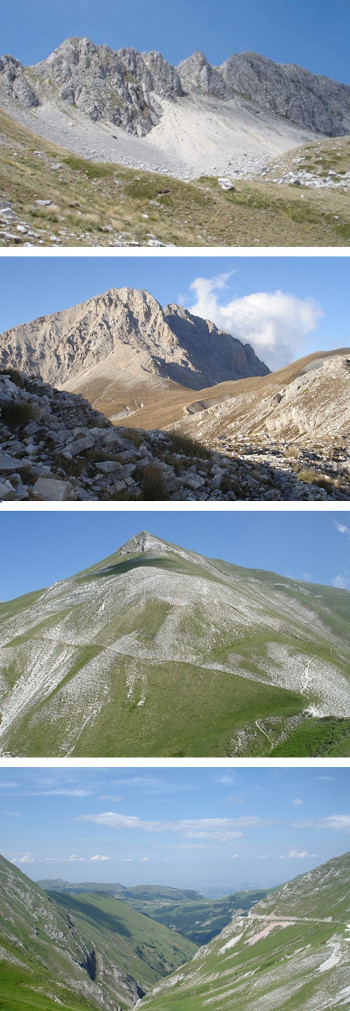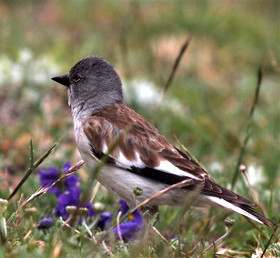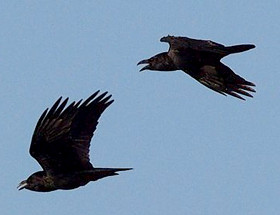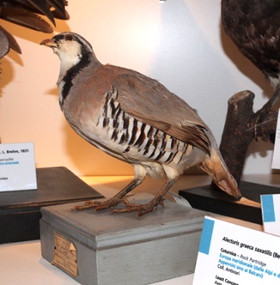Itinerary edited by UNIVERSITY OF PERUGIA 


Images of the concerned environment:

The high mountainous backbone that constitutes the principal orographical axis of the Apennines in Umbria and the Marches, rises to altitudes over 1.750/1.800 metres above sea-level, with peaks that are well above the timber line. Shrubs, detrital screes, sheer walls of rock and grassy valleys are the habitat of plant species originating in the arctic-alpine environments.
These particular eco-systems are also the habitat of diverse animal species that have adapted perfectly to life in the harsh climate and environment of these high altitudes. Many migrated here from Nordic countries or the cold steppes of the central Asian highlands during the last stages of the Ice Age in the Quaternary period. They are found only in the South-east corner of Umbria, in the peaks of the Upper Valnerine area and the Sybilline mountains which, although remarkably well conserved in their wild state, still bear the marks of thousands of years of human activity.
Human activity developed in these mountainous areas from the Stone Age onwards. Constituted mainly of sheep and goat herding, it impacted deeply upon the original environment, re-modelling it as livestock and herders migrated with the seasons between lowlands and adjacent mountains. Seasonal herding persisted in the area, now expanding, then contracting, right up until the mid-19th century. It still exists on a very small scale today adding marginally to the local economy, in quite a few places like the upland plain around Castelluccio di Norcia and other areas in the Sybilline mountain chain.
Many features in current ecology that characterise the peaks of this area along the Umbria-Marches border evolved over time in full synergy with thousands of years of human activity so much so that they have created true “herders’ landscapes”.
Typical species:

The white-winged snowfinch (Montifringilla nivalis)
This small passerine bird, (18 cm in length, weighing about 40 g), has grey and white plumage with primary flight feathers on its wings and its black central and apex rudder feathers in its tail. In males its short, strong, yellowish beak darkens in colour during the mating season. It is found over a wide geographical area from the central Asian upland plains and mountain ranges, to peaks in the Near East, Balkans, the Alps, Pyrenees and Cantabrian Mountain Range. Resident at high altitudes, it is usually found between the tree and perpetual snow lines which lie at 1.500 to 3.500 metres above sea level in the Alps and at up to 5.300 metres above sea-level in Tibet.
The white-winged snowfinch prefers to nest in rocky areas and mountain meadows. In spring and summer it feeds on plants and insects and in winter on seeds. Even though it does not usually migrate from the European and Asian mountain ranges it may move down to lower altitudes or less exposed mountain areas in the coldest winter months. Every year in spring-summer it builds its nests at high altitudes, in cracks in the rocks or between boulders on high-altitude meadows from plant material, lining them with soft feathers.
The white-winged snowfinch is a major feature in mountain birdlife in the high Apennine mountain peaks along the Umbria-Marches and Lazio-Abruzzo borders, from the Sybilline mountain range, to the Gran Sasso, the Velino-Sirente and the Majella massif. It has become a living symbol of this harsh, impervious terrain, which is dominated by the wind, burning summer sun and ice and snow in its long, cold winters.
A few pairs of the white-winged snowfinch are found in the rocks and high-altitude meadows of the Sybilline Range National Park, which extends between Umbria and the Marches and includes the entire mountain range. Many peaks are over 2,000 metres in height with the highest being Mount Vettore at 2,478 metres above sea level.
In late spring and summer the white-winged snowfinch tends to be found over 2,000 metres above sea level among the highest peaks of these majestic limestone mountains. There, the high altitude meadows are full of herbaceous plants that originated in the arctic tundra, the Alps ,Illyria or the Balkans. Some few species of rock plants or similar that can grow on stony, detrital substrates are endemic to the Central Apennines, with their rocky peaks, mountain cliffs, screes and stretches of stony land.
 The raven (Corvus corax)
The raven (Corvus corax)
The largest of all corvids in Europe (64 cm in length, weighing 1250 gr),the raven has glossy black plumage, a thick heavy black bill and a strongly graduated tail, which is clearly visible in flight.
Ravens are found all over Europe, Asia and north America in most northern temperate or sub-arctic zones. They live in very different habitats – from the cold tundra in the far north, to the northern pine forests and the hardwood trees in the temperate zone, to the Mediterranean scrublands, steppes and semidesert regions in places with hot and sub-tropical climates.
They are also found along the coasts, particularly on northern cliffs and in high-altitude mountain regions where they nest in ravines in the rocky cliff-faces. They are omnivorous, feeding on plants and small animals including small vertebrates and even carrion. For the most part, ravens do not migrate from their areas.
In Italy ravens are found mainly in the Alps, in mountain ranges in the central-south Apennines and on the islands. Once the victim of hunters and environmental deterioration in mountain regions, the raven today is considered a rare, threatened species practically all over Italy.
In the Lazio-Abruzzo area of the Apennines ravens have successfully been re-introduced into suitable protected areas, like the nature reserve on Duchess Mountain and the nearby Velino and Sirente massifs. Although ravens are extinct as a nesting species in the Umbria-Marches border area, individual birds from nearby areas have often been sighted in the Sybilline mountain range.
 The central rock partridge (Alectoris graeca saxatilis)
The central rock partridge (Alectoris graeca saxatilis)
The central rock partridge is a smedium - sized gallinaceous bird, (35 cm in length, weighing about 650 g). Its plumage is mainly grey with black-brown streaked flanks. Its throat is typically white with a black gorget. In adults the beak and legs are bright red in colour. Sexual dimorphism is very weak.
The gallinaceous partridge is found in the central-eastern Mediterranean area, the mountain ranges running from the Balkans to the Alps, the Apennines and Sicily. There are three recognized sub-species: Alectorisgraecagraeca, Alectorisgraecasaxatilis and Alectorisgraecawhitakeri.
The central rock sub-species of the partridge (Alectorisgraecasaxatilis) is found from France to Slovenia in the Alps, and from Liguria to Calabria in the Apennines. It prefers hilly and mountainous areas ranging in altitude from 900 to over 3,000 metres above sea level with their dry prairies, shrubs and bushes, rocky areas, screes and stretches of stony detrital land.
The central rock partridge feeds mainly on vegetable matter, particularly seeds, and insects. Although it does not migrate from its Mediterranean mountain habitat, large sized flocks may move in an erratic pattern to lower altitudes in the coldest, snowiest Alpine winters. In the spring-summer the partridge nests in a ground scrape, between rocks or low shrubs, lining shallow hollows with plant material and feathers. Because of over-hunting and deterioration of its grassy upland habitat, the central rock partridge is at risk of extinction not only in the Umbria-Marches and Lazio-AbruzzoApennine areas but all along the Apennine mountain range. In Umbria and the Marches few surviving partridge populations are considered likely to procreate. They are mainly found in relatively remote, impervious parts of the Upper Valnerina area and the Sybilline Mountains.